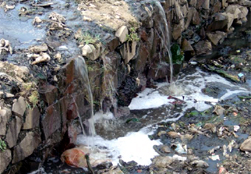Pollution in rivers

The pollution load on rivers has increased over the years due to rapid urbanisation and industrialization. Domestic sewage is the major source of pollution of rivers besides industrial and other non-point sources of pollution. Abstraction of water for irrigation, drinking, industrial use, power etc. compounds the challenge. Based on the water quality monitoring, Central Pollution Control Board (CPCB) has identified 150 polluted stretches of rivers in the country. A statement indicating the number of polluted stretches of rivers state-wise is given in the Annexure-I.
Related Content
- Order of the National Green Tribunal regarding deterioration of Nayar river, Uttarakhand, 05/06/2025
- Order of the National Green Tribunal regarding pollution of Godavari river, Telangana, 29/05/2025
- Order of the National Green Tribunal regarding violation of environmental norms by a tyre pyrolysis plant, village Sakauti, Shamli, Uttar Pradesh, 28/05/2025
- Order of the National Green Tribunal regarding waste disposal in Ghazipur drain, Delhi, 28/05/2025
- Order of the National Green Tribunal regarding discharge of domestic waste water and untreated industrial waste water into river Ganga, Varanasi, Uttar Pradesh, 23/05/2025
- Order of the National Green Tribunal regarding remedial actions to be taken for abatement of pollution of river Bhadar near Ahmedabad, Gujarat, 09/05/2025
